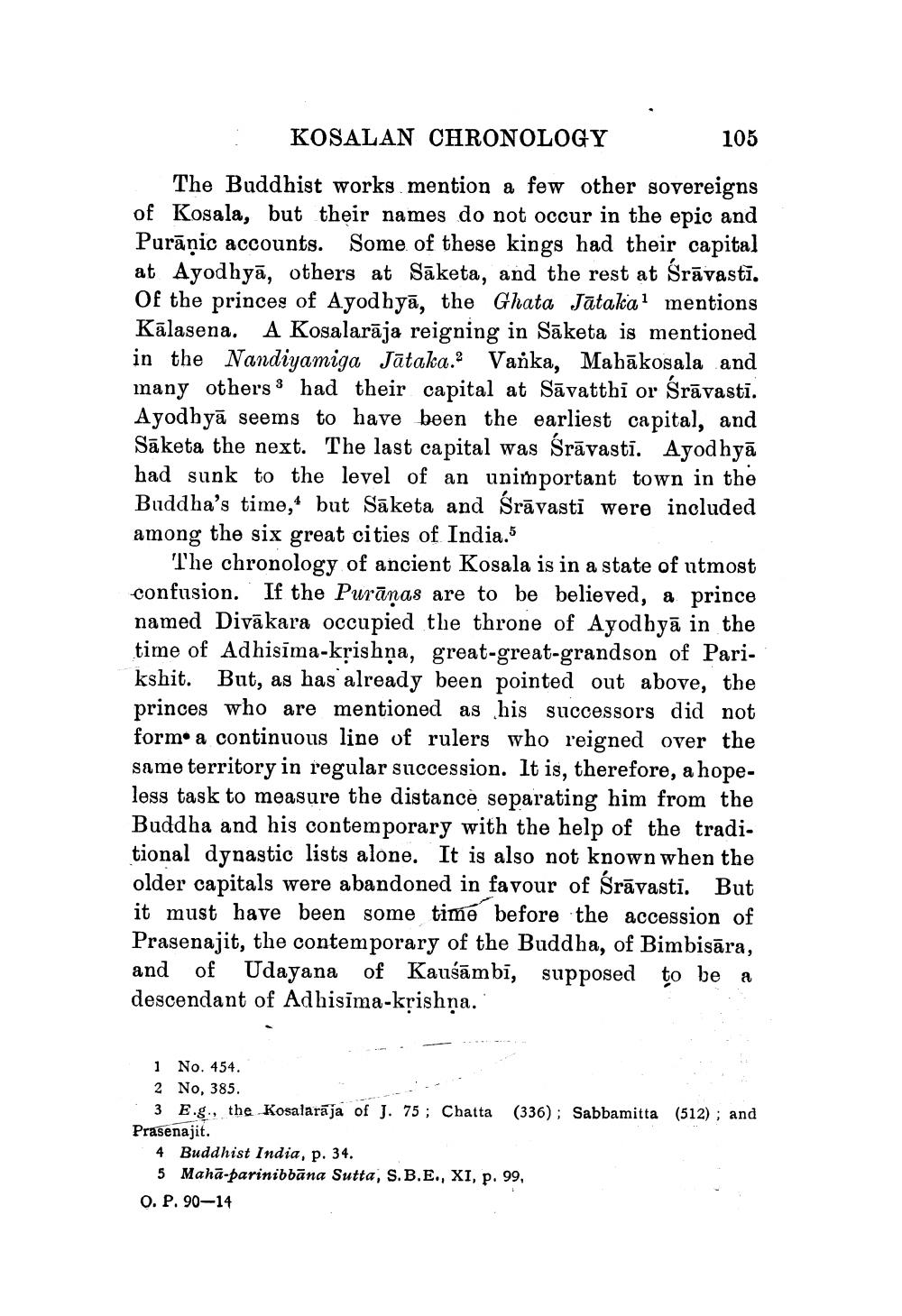________________
KOSALAN CHRONOLOGY 105 The Buddhist works mention a few other sovereigns of Kosala, but their names do not occur in the epic and Purāṇic accounts. Some of these kings had their capital at Ayodhyā, others at Sāketa, and the rest at Srāvasti. Of the princes of Ayodhyā, the Ghata Jatakal mentions Kālasena. A Kosalarāja reigning in Sāketa is mentioned in the Nandiyamiga Jātaka. Vanka, Mabākosala and many others : had their capital at Săvatthi or Śrāvasti. Ayodhyā seems to have been the earliest capital, and Sāketa the next. The last capital was Srāvasti. Ayodhyā had sunk to the level of an unimportant town in the Buddha's time,“ but Sāketa and Srāvasti were included among the six great cities of India.5
The chronology of ancient Kosala is in a state of utmost confusion. If the Purānas are to be believed, & prince named Divākara occupied the throne of Ayodhyā in the time of Adhisīma-krishna, great-great-grandson of Parikshit. But, as has already been pointed out above, the princes who are mentioned as his successors did not form. a continuous line of rulers who reigned over the same territory in regular succession. It is, therefore, a hopeless task to measure the distance separating him from the Buddha and his contemporary with the help of the tradi. tional dynastic lists alone. It is also not known when the older capitals were abandoned in favour of Srāvasti. But it must have been some time before the accession of Prasenajit, the contemporary of the Buddha, of Bimbisāra, and of Udayana of Kaušāmbi, supposed to be a descendant of Adhisima-krishņa.
1 No. 454. 2 No, 385.
3 E.g., the Kosalarāja of J. 75; Chatta (336); Sabbamitta (512); and Prasenajit.
4 Buddhist India, p. 34.
5 Mahā-parinibbāna Sutta, S.B.E., XI, p. 99, O. P. 90-14




